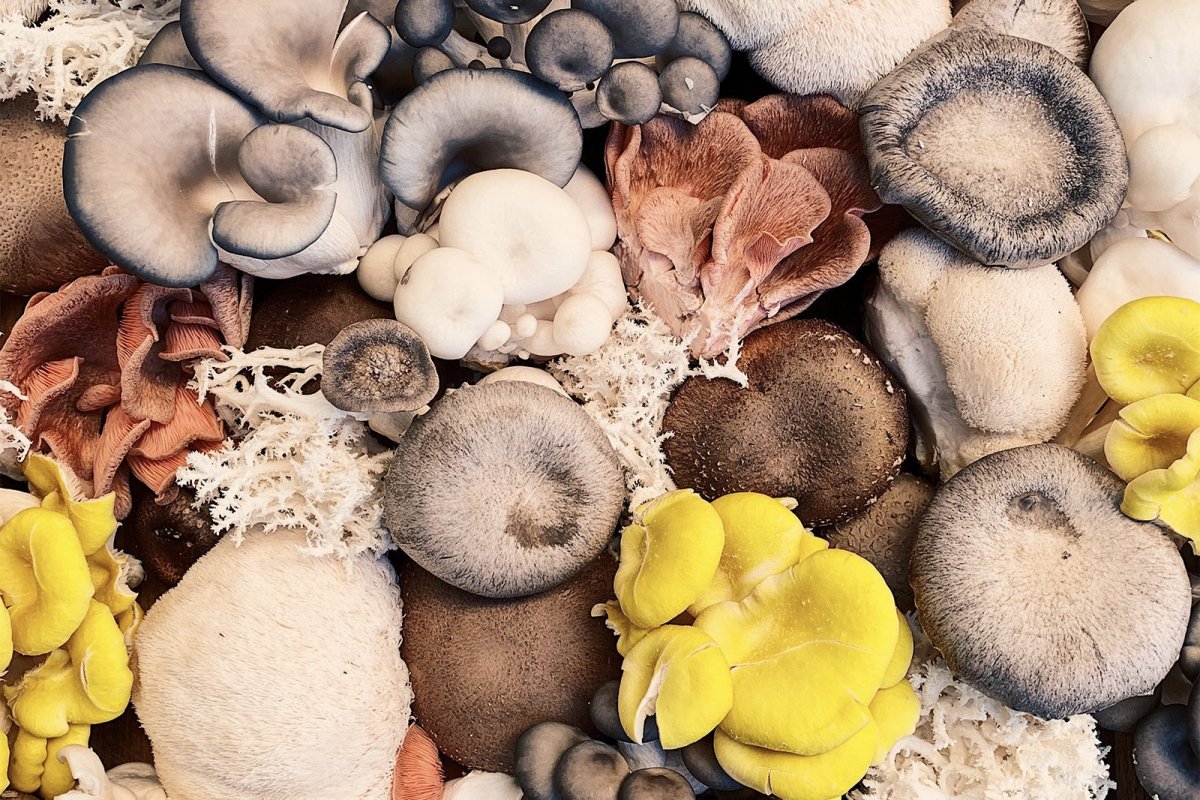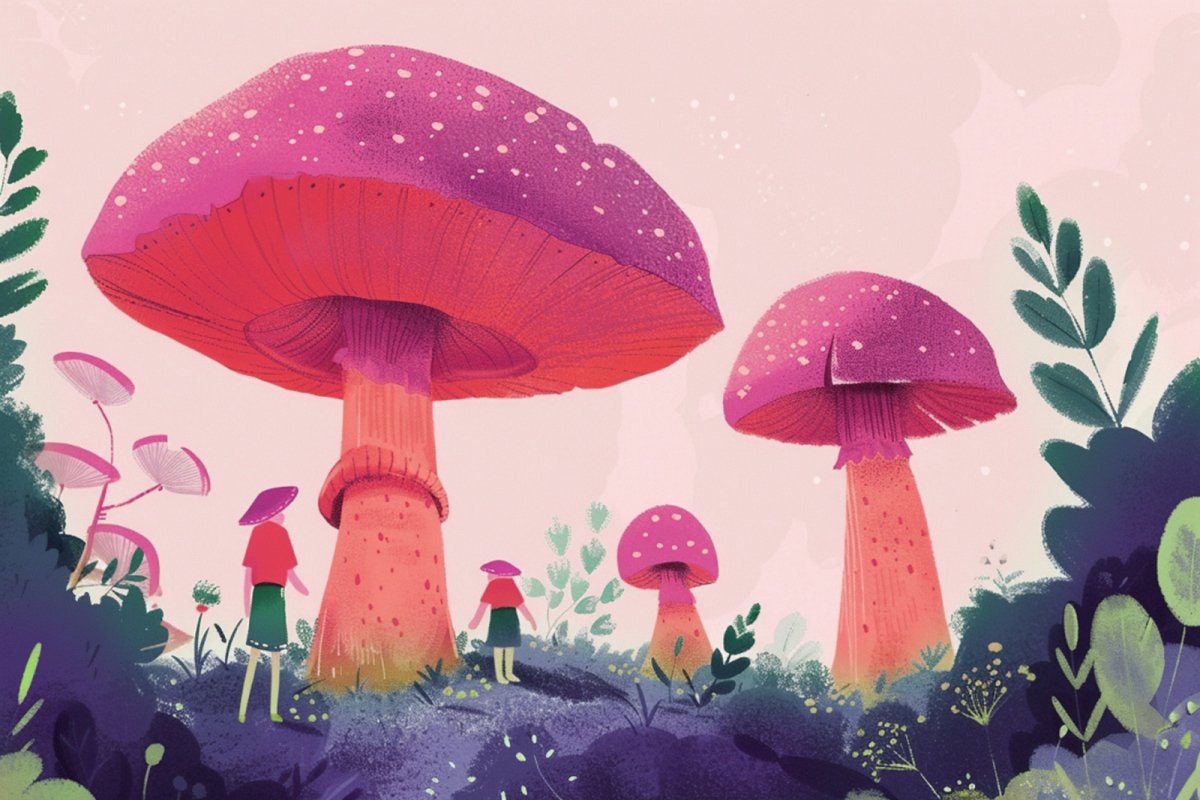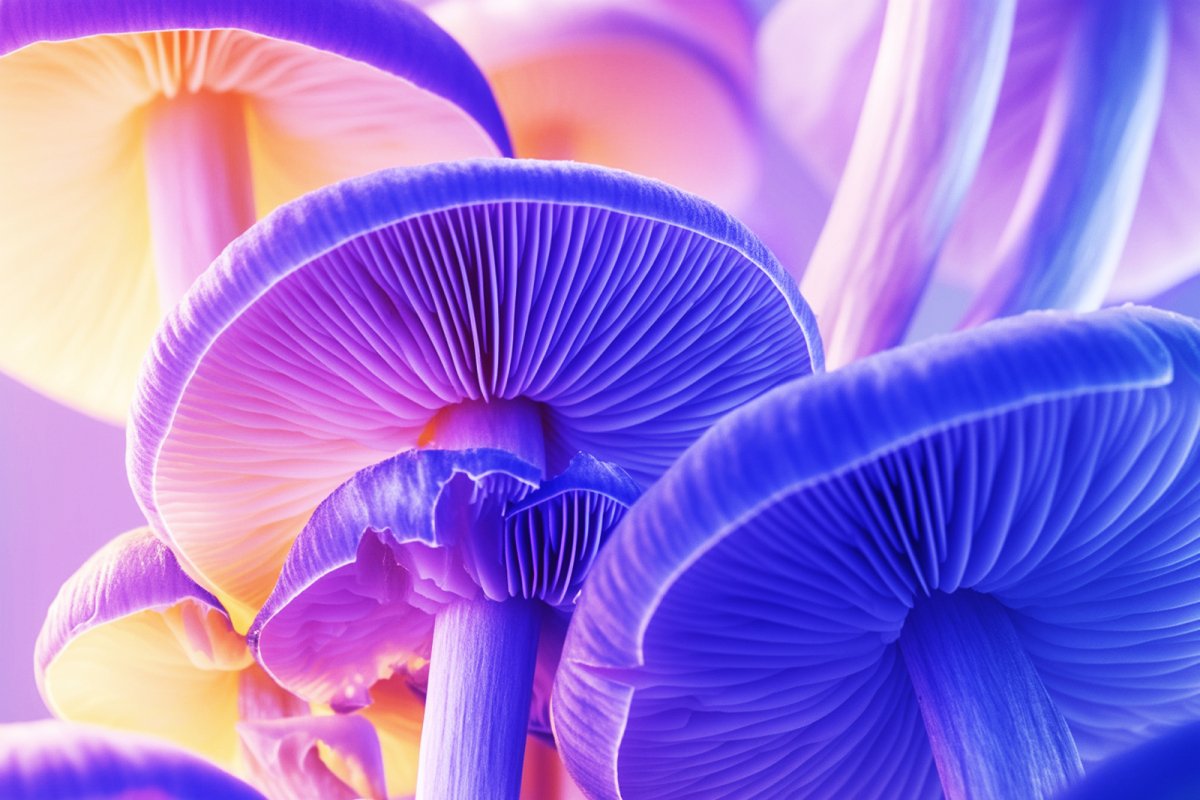

Is a Mushroom Abiotic or Biotic?
Published:
Updated:
Life on earth is basically learning to interact with the combination of living organisms, weather conditions, and the nature of the terrain where you are. The world itself is a combination of biotic factors (living organisms) and abiotic factors (non-living things, climatic, and geological factors.)
All living things, including ourselves as human beings, are part of the interaction between these factors, like animals, plants, bacteria, microbes, and fungi.
We know that it can be a bit confusing with some things if it is a living organism or an inert thing without life and it is only part of the foliage. Such is the case of mushrooms since it can be confusing for some people if they are living beings or just something that grows on the ground.
This doubt may be more common than we would initially believe. To clarify this, we bring this post that deepens the function and role that mushrooms play, including medicinal mushrooms, in the interaction between the different biotic and abiotic factors that comprise mother earth.
But, first of all, let's start by clarifying a fundamental doubt.
Key Takeaways
- The term biotic refers to all living things, while abiotic refers to non-living things in the environment.
- Biotic factors are divided by their type and function.
- Since mushrooms are living things, they can be considered biotic.
Is Fungi Biotic or Abiotic?
The word "biotic" refers to life itself, living beings, and everything derived from them. Biotics refers to everything related to or resulting from living organisms. Therefore, the correct answer is that fungi are biotic.
On the other hand, abiotic means "non-living" and refers to environmental factors that influence living beings' lives and even their chances of survival.
From this classifications perspective, there are different types of biotic and abiotic factors, each of which has its specific function.
Biotic Factors by Type
When we talk about the types of biotic factors of an ecosystem, we refer to every living organism that inhabits or is part of said ecosystem. The types of biotics present in an ecosystem can vary tremendously depending on the same ecosystem's abiotic factors, such as soil conditions, climate, and temperature.
All these factors, in turn, are determined by nature, environmental factors, and the geographical location of said ecosystem.
So, for example, the types of biotics in a forest ecosystem are very different from those in a marine ecosystem, and both are very different from the biotics present in a desert ecosystem.
Although there may be variations depending on the type of forest and its geographical location, the most common biotics in a forest are generally:
- Trees (predominantly biotic in most forests)
- Shrubbery
- Ferns
- Flower plants
- Lichens
- Fungus
- Microbes
- Worms
- Insects
- Reptiles
- Birds
- Mammals
In the case of deserts, the biotics present in these ecosystems would basically comprise the same types but with differences in the predominance of some of them.
For example, in deserts, you may not find as many varieties of types of fungi as it is a much drier and more hostile environment for this form of life than a forest. The animals present are also different.
In the desert, the insects that seem to have adapted perfectly to this type of climate are arthropods and xerocles, the scientific name given to animals that manage to adapt to life in this type of climate.
If we talk about the types of biotics present in an aquatic ecosystem, there can also be really significant variations depending on the location and climate of said ecosystem.
Water covers around 71% of the earth's surface and comprises ecosystems that include oceans, the deep sea, the maritime floor, seas, lakes, rivers, estuaries, lagoons, and mangroves.
Nevertheless, generally, the biotics present in an aquatic ecosystem are:
- Phytoplankton
- Aquatic plants
- Crustaceans
- Mollusks
- Fish
- Aquatic mammals
- Amphibians (in some ecosystems)
- Fungus
- Bacteria
In the case of aquatic ecosystems, there is a particular factor that is really curious since it is biotic and abiotic at the same time.
We are talking about the coral reef, which is made up of living organisms and inert things, that is, by biotic factors such as coral fish, plants, and the corals themselves, and abiotic factors such as rocks, minerals, and even debris and pollution in some cases.
Abiotic Factors by Type
As with biotics, the abiotic factors in an ecosystem can vary depending on the ecosystem itself. When we talk about abiotic, we refer to non-living physical and chemical components of the environment that affect living organisms and the functioning of ecosystems.
For example, in a dry land ecosystem, the types of abiotic factors can be:
- The weather
- The air
- Temperature
- Sunlight
- The rain
- Soil
- Nutrients
- The pH
- Humidity
Just as they vary on land, so do the types of abiotic factors in aquatic ecosystems. However, they are usually:
- Water and its different concentrations of salt and nutrients
- The pH
- Dissolved oxygen content
- The light
- Temperature
- Type of substrates
- Water depth
- Currents
Biotic Factors by Function
Biotic factors are the living components of an ecosystem and their activities. Biotic factors divide into three main types of biotics according to their function and way of participating in an ecosystem.
This is called functional classification, and it usually divides biotic factors into three main categories, which are:
Producers or autotrophs: comprise mostly plants and photosynthetic life forms with the ability to transform light and solar energy into food and nutrients. These are the main generators of food in an ecosystem and directly being the food of other organisms.
Consumers or heterotrophs: consumers are living organisms that cannot produce their own food but take their nutrients from other sources. It refers to herbivore animals or primary consumers, which only eat plants; carnivores, omnivores, or secondary consumers. Lastly, tertiary consumers are carnivorous animals that also eat other carnivores.
Decomposers or detritivores: detritivores are also heterotrophs, but they obtain the nutrients they need from detritus, which are decomposing parts of plants and animals. Within this category, we also find bacteria and fungi, which are also lysotrophs, saprotrophs, or chemoheterotrophs.
This kind of microorganism uses extracellular digestion to process decaying organic matter. Mushrooms are decomposers because they take their nutrients from decaying plant and animal matter in the soil or surface where they grow.
Abiotic Factors by Function
Abiotic factors are all those non-living components that are part of an ecosystem and influence living organisms' life and chances of survival. Each ecosystem can have variable abiotic factors.
But, considering their function, we can classify them into seven general categories.
- Water: Water, its nature as a level of pH and mineral content, and the abundance or lack of this can truly determine factors for the life and development of living organisms in an ecosystem.
- Light: The abundant light or lack of it in an environment can tremendously influence the type of living organisms that proliferate in that ecosystem. Some plants and animals need more or less light to subsist, so the level of sunlight in an ecosystem can make some living organisms more successful than others.
- Atmosphere: The atmospheric conditions of a place can have such a significant impact on some species and all living organisms that even certain species develop physical traits that arise evolutionarily related to the adaptability of these organisms to the atmospheric conditions of the place where they are.
- Temperature: The temperature goes hand in hand with the atmospheric conditions, although they do not always depend on each other. Similarly, the temperature is also one of the factors to which living organisms that inhabit an ecosystem must adapt. In fact, the temperature can determine if organisms can live in an ecosystem or not.
- Humidity: This is another factor that is derived from the atmosphere and partly from the temperature. Humidity is a critical factor, especially for certain types of plants and fungi. And like other factors, humidity can also determine whether an ecosystem is ideal for a particular organism or not.
- Soil: Soil conditions are one of the most critical abiotic factors for developing different species of living beings. Some plants simply cannot grow in certain types of soil because of the soil's nutrients, the level of humidity in it, and the density of the ground, among other characteristics.
- Acidity: The acidity level or pH is determining in any ecosystem for the success and proliferation of plants and animals that inhabit that place. The acidity is as decisive in the soil as in water and aquatic ecosystems.
- Radiation: As with chemical factors, the level of radiation present in an ecosystem can be a crucial factor for the success or failure of many species in an ecosystem. For example, the complete biome of the ecosystem near the Chernobyl plant changed entirely after the accident that filled the city's surroundings with radiation.
Are Mushrooms Probiotic?
The most concrete and summarized answer would be no. Nonetheless, non-digestible fungal polysaccharides can function as prebiotics and therefore help increase the growth of probiotic bacteria in the intestine.
This, consequently, decreases pathogenic proliferation. This applies partly to edible mushrooms in general, but especially medicinal mushrooms such as Reishi, Lion's Mane, Turkey Tail, and Chaga are good for intestinal health and are among the most powerful adaptogenic in nature.
Therefore, they are up on the list of medicinal fungi for intestinal health. Mushroom's benefits for men and woman has caused an increase in the popularity of supplements that contain these medicinal mushrooms.
Do Mushrooms have Probiotics?
Fungi do not have probiotics, but evidence suggests that many medical edible mushrooms are rich in carbohydrates like chitin, hemicellulose, and -glucans, and mannans xylans, and galactans, which serve as food for probiotics and stimulate the growth of good intestinal microbiota.
There are currently many types of fungal supplements available on the market. Each of them is better for specific purposes than others, depending on the concentration of extracts of each kind of medicinal fungus that this supplement contains.
There are other supplements with different formulas from the same medicinal fungi, such as our TUNE IN beverage, that also benefit the immune system but are also excellent for providing energy, focus, and clarity.
VYU Blog Disclaimer
The information provided on the VYU blog is intended solely for informational and entertainment purposes. It should not be used as a substitute for professional medical advice, diagnosis, or treatment.
Always seek the advice of your physician or other qualified health provider with any questions you may have regarding a medical condition or treatment and before undertaking a new healthcare regimen. Never disregard professional medical advice or delay in seeking it because of something you have read on this website.
For more information, check out our FAQs and contact page.
Blog posts
-

Host Defense vs. Om Mushrooms vs. VYU
Compare Host Defense, Om Mushrooms, and VYU for your health journey. Find out which offers the best blend of taste and benefits. Elevate your wellness today! -

Genius Mushrooms vs. Om Mushroom vs. VYU
Learn why VYU is the superior choice for functional beverages, offering exceptional taste and health benefits to boost your mental performance -

Om Mushrooms vs. Four Sigmatic vs. VYU
Compare Om Mushrooms, Four Sigmatic, and VYU for your health journey. Choose the ideal beverage to boost your wellness today!
Sign up to our productivity newsletter
and get 10% off your first order.



